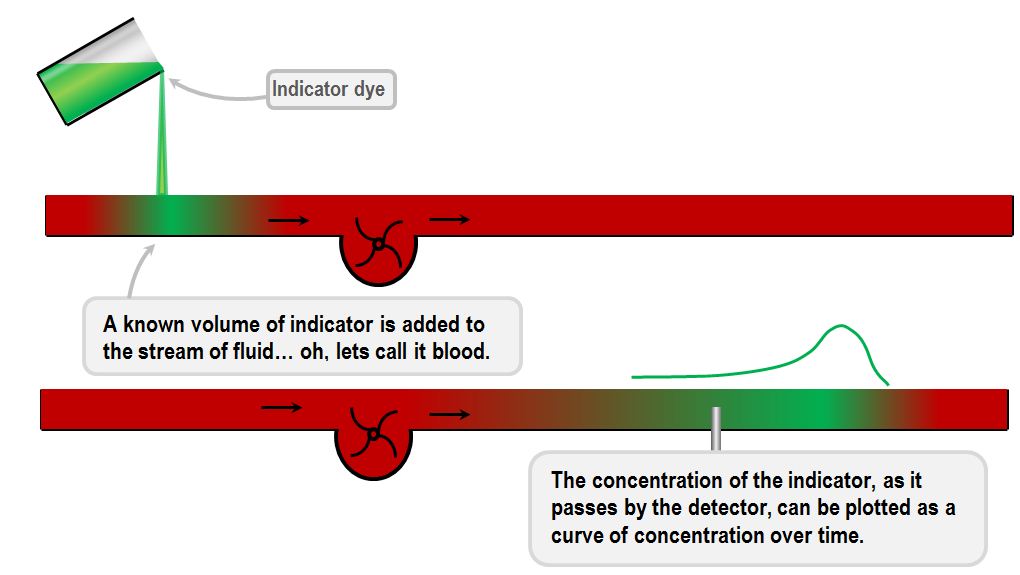What Does Dye Dilution Mean?
The Definitive Guide to Dye Dilution
Table of ContentsHow Dye Dilution can Save You Time, Stress, and Money.Dye Dilution - QuestionsThe 6-Minute Rule for Dye DilutionThe 30-Second Trick For Dye DilutionAbout Dye DilutionRumored Buzz on Dye Dilution3 Simple Techniques For Dye Dilution

Tritiated water was first explained by Rate et al. as an isotope for gauging TBW. The primary benefit of utilizing tritium (3H), the contaminated isotope of hydrogen, is that it is easily offered as well as conveniently assayed by scintillation counting. On the various other hand, a large amount of tritiated water have to be provided to obtain appropriate accuracy, eliminating its usage in cases where using radionuclides is limited (Dye Dilution).
Greater technological mistakes have been discovered making use of the infrared method. When utilizing isotope dilution, especially deuterated water, two body liquid examples from urine, blood, or saliva are collected: one prior to administration of the deuterium dosage to figure out the all-natural background levels and the 2nd after permitting adequate time for penetration of the isotope.
Dye Dilution Fundamentals Explained
There are four standard assumptions that are fundamental in any kind of isotope dilution method. Tracer exchanges with nonaqueous molecules are very little, and consequently, the quantity of distribution or dilution room of the isotope can be established, albeit a little better than the water pool.

Three gaps are recommended after the dosage when pee is made use of as the biological sample. Body water is in a consistent state of flux.
10 Simple Techniques For Dye Dilution
The inputs are balanced by a result of water in the kind of pee, sweat, breath water, or transdermal dissipation. This consistent turn over has actually caused two methods when evaluating TBW: the plateau technique and also the back-extrapolation, or slope-intercept, method. For body structure research study, the plateau method is the usual strategy.
Once you understand these concepts, you will certainly be better able to develop the dilutions you require for each particular case. Typically in speculative work, you need to cover an array of concentrations, so you need to make a number of different dilutions.
You may believe it would certainly be excellent to dilute 1/2, 1/3, 1/10, 1/100. There are 2 issues with this collection of dilutions. The dilutions are unnecessarily made complex to make.
Examine This Report about Dye Dilution

Serial dilutions are made by making the same dilution action over as well as over, making use of the previous dilution as the input to the next dilution in each action. Given that the dilution-fold is the very same in each step, the dilutions are a geometric collection (consistent proportion check these guys out in between any visit here adjacent dilutions). As an example: Notification that each dilution is three-fold about the previous one.
If that isn't enough variety, take into consideration a series of five-fold dilutions: Right here we've covered a (625/5) = 125-fold array. Despite where the half-max drops in a collection of 5-fold dilutions, it disappears than 2. 2-fold ("center" [square root] of a 5-fold step) far from an information point-- so the coverage of the range is comprehensive and also also.
Indicators on Dye Dilution You Should Know
This stays clear of bunching a lot of the punctuate at one end as well as having just the last factor method far down the scale. Before making serial dilutions, you require to make harsh price quotes of the concentrations in your unknowns, and also your uncertainty in those quotes. If A280 states you have 7.
That implies you need to cover a ten-fold array of dilutions, or possibly a bit much more to be certain. If the half-max of your assay happens at about 0. 5 mg/ml, then your minimum dilution fold is (700 mg/ml)/(0.
To be risk-free, you might want to cover 1,000 with 20,000. In basic, before developing a dilution series, you need to determine: What are the cheapest as well as greatest focus (or dilutions) you need to check in order to be particular of finding the half-max? These establish the variety of the dilution series.
The smart Trick of Dye Dilution That Nobody is Talking About
You need to make a 1/1,000 dilution to start with. You need to serially thin down that 2-fold per step in five actions.
Why is that an inadequate option? Because you can not measure 1 microliter (or also 10 microliters) accurately with ordinary pipeters. So, make 3 serial 1/10 dilutions (0. 1 ml [100 microliters] into 0. 9 ml): 1/10 x 1/10 great post to read x 1/10 = 1/1,000. Currently you could add 1. 0 ml of the beginning 1/1,000 dilution to 1.
0 ml from that dilution (leaving 1. As well as so forth for 3 even more serial dilution steps (providing 1/8,000, 1/16,000, as well as 1/32,000). 0 ml of each dilution.
The Basic Principles Of Dye Dilution
The Cell, Trace Violet package is used to keep an eye on distinctive generations of multiplying cells by color dilution. Real-time cells are covalently classified with a really intense, secure color. Every generation of cells looks like a various peak on a circulation cytometry histogram.
Only the final plateau worth or C2, the downstream focus, must be recorded as opposed to a complete record of the passing cloud that is needed with the salt-velocity-area method. Since the concentrated tracer service need to be included in the circulation at a continuous recognized rate, positive displacement metering pumps are required for shot.